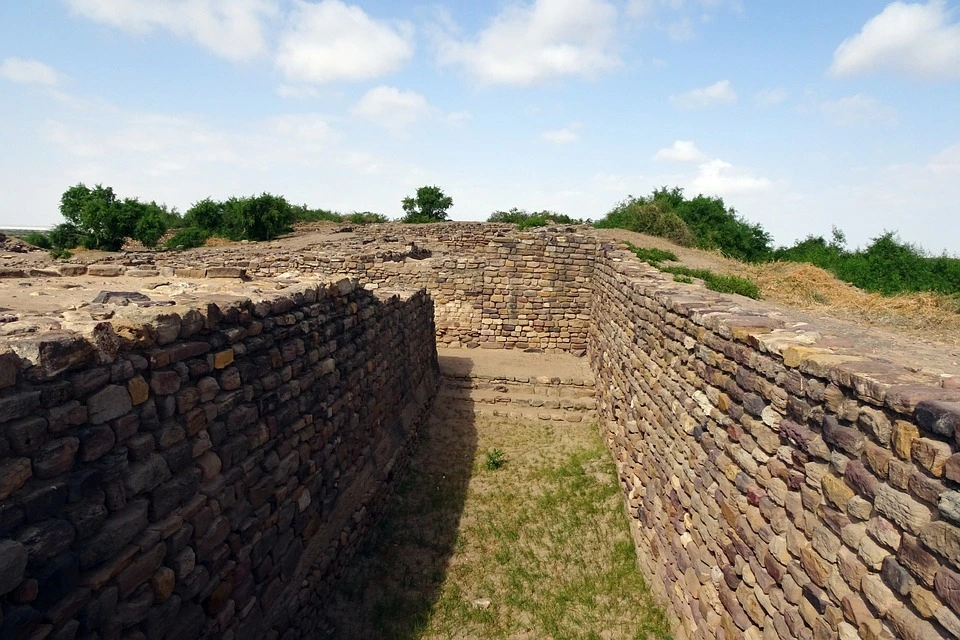The word “Civilization” is derived from the Latin word “Civitas,” which means citizen. It denotes the intricacy of life that emerged as a consequence of urban settlements.
Pakistan, located in South Asia, has a diverse and rich culture dating back from the ancient Indus Valley Civilization to the current modern times. History, geography, and religion influence Pakistan’s cultural heritage. So, the rise and fall of these civilizations have left a unique legacy in this region.
In this Blog, we will explore Pakistan’s cultural heritage, from Indus Valley Civilization to Modern One.
Ancient Civilization: A Unique Legacy of Pakistan’s Cultural Heritage:
As present-day Pakistan has been inhabited by the following ancient civilizations since 3300 BCE until the present time. Therefore, it is a vibrant mix of civilizations that has left its footprint on the culture of Pakistan. The ancient civilizations include:
- Indus Valley Civilization
- Gandhara Civilization
- The Mughal Empire
- British Colonial Raj
Indus Valley Civilization
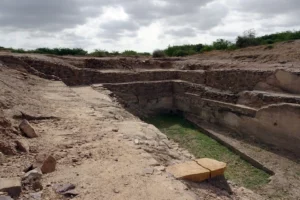
Indus Valley civilization is one of the oldest civilizations dating back to 3300 BCE. It evolved from the villages that utilized the Mesopotamian irrigation model in agriculture.
Indus Valley civilization extended along Indus, from Northeast Afghanistan to Pakistan and Northwest India. Archaeologists discovered its two major cities, Harappa and Mohenjo-Daro, in Punjab and Sindh.
Now we are aware of what an Indus Valley Civilization is. So further we will reveal information about how it came to an end.
The End of Civilization: Revealing the Secret Behind the Fall of Indus Valley Civilization
Scholars have suggested two significant theories for the demise of civilization.
Aryan Invasion:
According to archeologists, an Indo-European tribe Arayan attacked the Indus valley civilization. The remains of the dead city showed many unattended corpses, which shows the brutality of the Aryans.
The climate change theory:
The environmental changes like drying of the Sarasvati River, deforestation, drought, and flooding, resulted in disastrous effects on people, as evidenced by the skeletons discovered in the remains of the civilization.
The Key Characteristics of the Indus Valley Civilization
- Civilization had a dense population of approximately 5 million.
- The source of income was mainly trade and art.
- People were hygienic and had well-planned and strategically developed drainage systems.
- People used the Mesopotamian model of irrigation for agriculture.
- The first civilization to use wheeled transport.
- Although the remains of civilization lack evidence of temples, yet the seals of Mohenjo-Daro portray animals and other chimeric creations being taken in processions, symbolizing their role in worship.
- The archeological remains proved that people used the Indus script, a language consisting of symbols.
Since we have discussed Indus Valley Civilization in detail, now we will move on to next ancient civilization that is Gandhara Civilization
Gandhara Civilization
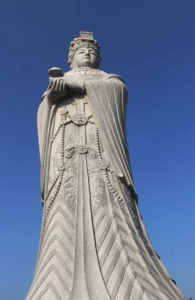
Gandhara civilization was located in present-day Peshawar and Taxila and extended up to the lower valleys of the Kabul and Swat Rivers. Gandhara was an ancient trade route and a cultural meeting place between Central Asia and the Middle East. The well-known cities of civilization were Peshawar, Mardan, and Taxila.
History: The Rise And Fall of the Gandhara Civilization
Gandhara was a province of the Achaemenid Empire. Alexander The Great conquered it in 327 BCE. Firstly, the region flourished under the rule of Chandragupta Maurya and than Emperor Asoka.
After the death of Asoka, Gandhara went under the control of Bacterian Greeks, Sakas, Parthians, and Kushans. They ruled it for four hundred years. The downfalls of Kushan’s empire led to the formation of minor dynasties which took control over Gandhara. Consequently leading to the end of civilization
Explore some exciting information regarding 11 famous Places You Can Visit this Weekend
The Key Characteristics of the Gandhara Civilization
- The dominant religion was Buddhism which was evident by the discovery of stupas and monasteries.
- They solely dedicated the entire artwork to religious ideals.
- The Gandhara art was a mixture of Indian-Greco-Roman.
- Cities and towns of civilization had well planned settlements.
- This civilization symbolized development in education, religion, and history.
The Mughal Empire
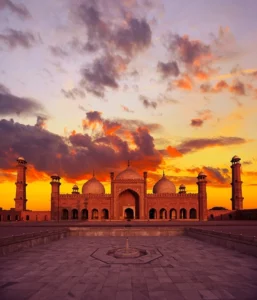
Zaheer-ud-Din Babar founded the Mughal Empire in 1526 in Northern India, which lasted from the 16th to the mid-18th century. Finally, In the mid 19th century, the Mughal empire was overruled by British Raj because of their incompetency.
Now, we have a general knowledge of Mughal dynasty. Therefore, we will move into further details.
History: The Rise and Fall of the Mughal Empire
A Timurid prince, Babar, founded the empire. From Kabul, he launched an attack against the Delhi sultanate, conquered Punjab, and extended his rule to Northern India, establishing the Mughal Empire.
Its best administrative policies and equal and fair relations with all the nations inhabited in India have recognized the Mughal Empire. Upon conquering any place, emperors would integrate local hostages into the administration and military to benefit from their skills and abilities. As time passed, their intolerance and autocracy escalated, mistreating minorities, imposing heavy taxes on them, and demolishing their places of worship.
Such unfair policies created resentment among people consequently leading to agitation and instability. Moreover, economic difficulties, territorial losses, enhanced British influence, family politics, and incompetent princes led to the end of the Mughal Empire.
As we have gone through the history of the Mughal Empire, now, we will go through the salient features of the Mughal Empire.
The Key Features of the Mughal Empire
- The Mughal reign was marked as time of high religious tolerance, harmony, and equality among the empire’s nations.
- In 1582, Emperor Akbar Introduced Din-e-ilahi, an amalgam of Hinduism and Islam.
- Music, poetry, art, and other forms of entertainment enriched this era.
- Architectural features of the Mughal Empire included domes with slender minarets along with medieval buildings, large halls, and large vaulted gateways.
Since we are aware of the weaknesses of the Mughal Empire, now we will see how the British cope with Subcontinent’s political situation.
The Colonial Era: British Raj
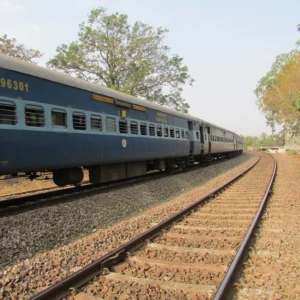
The British ruled Subcontinent from 1857 to 1947. The weakness of the Mughal Empire consequently strengthened the British government in India.
Enhance your knowledge regarding Best Investments In Pakistan: An In-depth Analysis
History: The Rise and Fall of the Mughal Empire
Near the end of the Mughal Empire, British influence increased in the region. So, British Colonial rule overruled the powerless Mughal Empire in 1857.
The involvement of the British in World War II caused economic and administrative problems for the government sitting in England. Muslims of the subcontinent knew that if the British left Muslims and their concern unattended, they would come under fascist Hindu rule. So, they raised the demand of separate home for them. As a result of political instability, the British left India in 1947, leaving behind two independent states.
Since the British left India but they had their footprints behind in the form of changes they brought in administration and basic infrastructure of the state. Now, we will discuss the changes they brought about in the system.
The Key Feature of the British Colony
- They introduced a modern agricultural system consequently yield of crops increased.
- The government introduced heavy income tax as a result of damage caused by the sepoy mutiny in 1857.
- The British introduced a well-planned network of railways so, they can communicate with faraway regions in short time.
- In order to promote agriculture, the government destroyed the local handicraft industry with its policies.
- Major crops of their reign were tea, coffee, and indigo.
Pakistan’s Cultural Heritage: A Combination Of Modern Culture and Ancient Civilization

As the modern culture of Pakistan is a mix of various influences from its past and present. Therefore, Pakistan has much to offer regarding cultural diversity, from food and fashion to music and movies. So, Pakistan’s cultural heritage is a reflection of its people, and this diversity makes it unique.
So far we have discussed the features of ancient civilizations, and now we will go through the characteristics of Modern civilization.
The Key Features of Modern Culture
- Modern architecture employs the idea of vertical orientation, skyscrapers, and glass buildings. Moreover, Mughal and British architectural designs are present across the country.
- Music is vibrant from modern pop and rock music to classical ghazals.
- Art and craft depict handicrafts with intricate designs and lively colors. In addition to it, Islamic art has influenced Pakistani art, with calligraphy as its dominant domain.
- As Pakistani cuisine has a pinch of Indian, Irani, Afghani, and Western influence. Therefore, Pakistani food consists of a unique blend of spices that distinguish our cuisine.
- As Pakistani fashion is an amalgam of vintage and modern ideas therefore dressing styles vary from salwar kameez and saree to Western dresses.
Read about Untouched Beauty of the Deserts in Pakistan
Conclusion
From the ancient Indus Valley Civilization to the Islamic art of the Mughals and the folk traditions of today, Pakistan’s Cultural heritage has treasures that continue to inspire and fascinate people worldwide. Therefore, various initiatives are undertaken to celebrate Pakistan’s cultural heritage, including cultural festivals, museums, and heritage sites. In conclusion, we can say that Pakistan’s cultural heritage is a testament to the country’s rich and diverse history.
